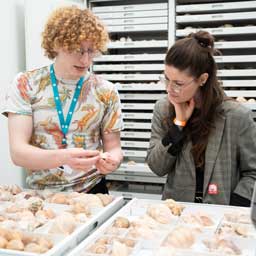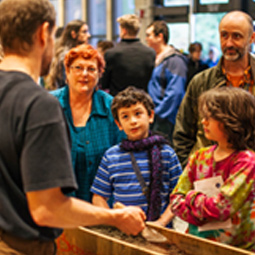 Rebecca Ansman
Rebecca Ansman
4th grade teacher, Queens, NY
Rebecca teaches in an ICT (Integrated Co-Teaching) classroom in New York, which creates a unique learning environment: “My classroom is made up of both general and special education students, allowing for a highly inclusive setting where students support and learn from each other... This approach encourages students to ask big questions and connect their learning to real-world issues.”
“I entered the DIG Field School seeking an experience with fossils and professional development on how to incorporate this into the classroom. Not only did I achieve that, but I left with an unforgettable experience of a lifetime. I literally climbed mountains, dug for fossils, analyzed those fossils, determined the age of those fossils, helped in running a dig site, and so much more.”
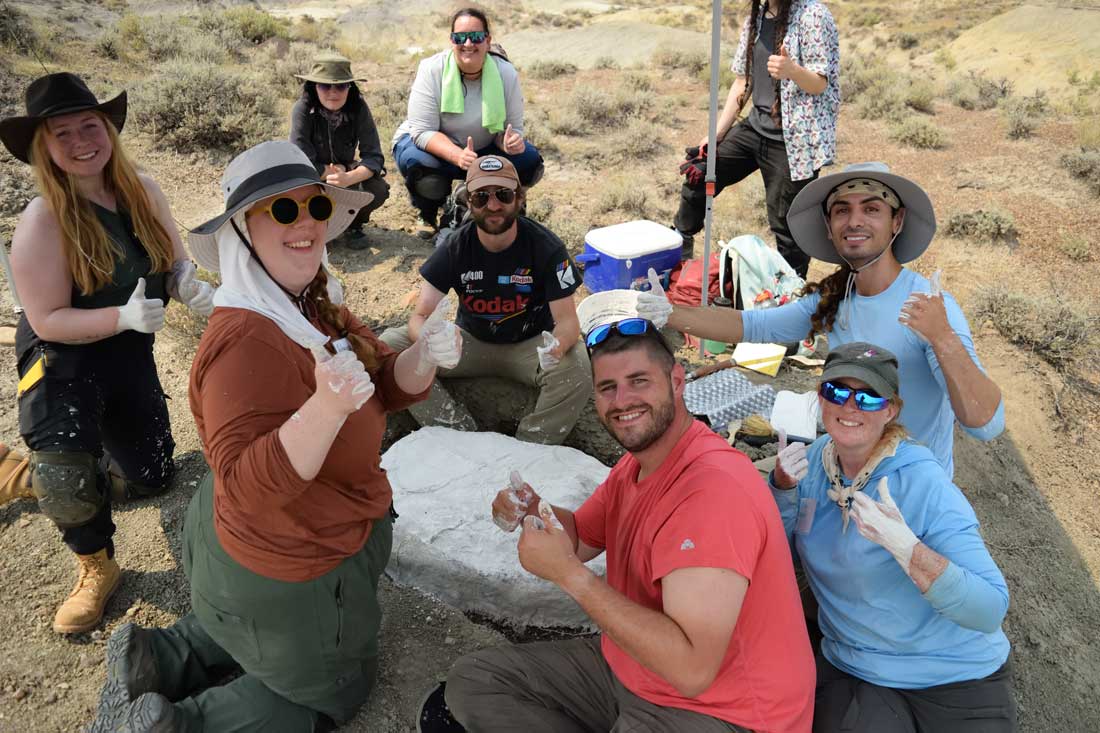
Rebecca’s class joined the DIG ‘virtual visit’ webinar last October and loved getting to hear from Burke paleontologists about their work in the field. They had been equally excited at the start of the year when Rebecca revealed a special back-to-school lesson: ‘What did Mrs. Ansman do this summer?’ Her students explored Rebecca’s work at the DIG Field School through her stories, pictures, and videos.
“The DIG Field School provided me with the experience I had always hoped for, while also equipping me with the knowledge and opportunity to share the fascinating field of paleontology with my students.”
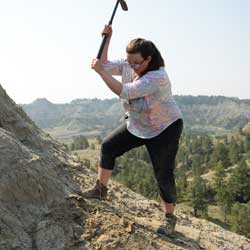 Heather Chadwick
Heather Chadwick
3rd grade teacher, Oklahoma
“The most exciting part of my DIG Field School experience was being part of the discovery of a brand-new microfossil site. While most of the group was focused on preparing a Triceratops skull for removal, a few of us ventured to a new location where another potential Triceratops skull had been found. During a break, we started picking up microfossils and quickly realized we had stumbled upon a treasure trove. Being involved in the discovery, documentation and naming of this new site was exhilarating, it felt like history was unfolding right in front of us!”
Heather’s time at DIG Field School inspired her to organize her school’s first ever Family Science Night: “Each grade set up engaging science experiments for children and their families, and we hosted a traveling planetarium for an out-of-this-world experience. The local aquarium even joined us, bringing along an assortment of fascinating creepy crawlies for the kids to explore.”
Heather even made her own hands-on ‘dig site’ activity using kinetic sand, letting kids use brushes and toy picks to excavate plastic dinosaurs. She supplemented the experience with information from the DIG Burke Box lesson plans, an online resource available to teachers who check out a box.
"Watching the kids get excited as they unearthed their own ‘fossils’ was incredible! The event brought in over 300 attendees and created such an electric atmosphere of curiosity and discovery. Thanks to everyone’s enthusiasm, we also raised a substantial amount through various fundraisers, helping us further support science learning in our school.”
“Now, I have a room full of aspiring paleontologists who are excited about science and eager to learn more.”
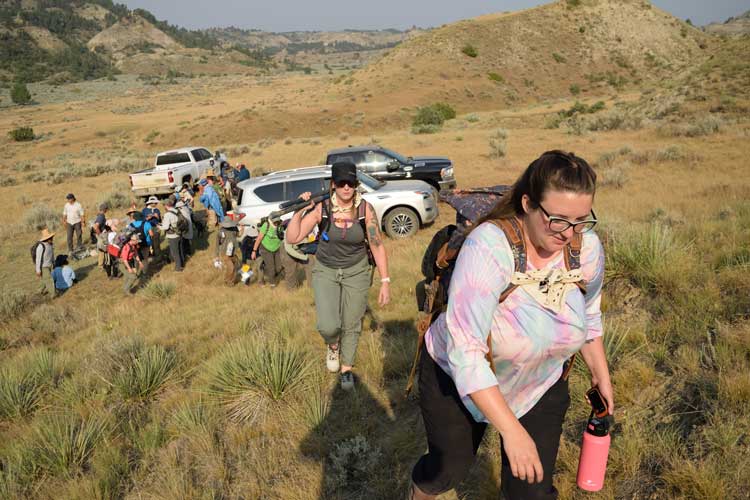
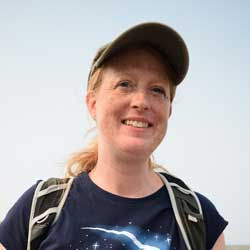 Kathy Smith
Kathy Smith
1st – 5th Grade Reading Specialist, Kansas City, MO
As a reading specialist, Kathy enjoys integrating science into her work helping students improve their reading abilities: “The push has been to focus only on reading and math, so science has been neglected. I am so excited to bring some hands-on authentic experiences to our students with the DIG Burke boxes and share what I experienced this summer.”
“I have the ammonites from our last day [at DIG Field School] displayed on a shelf and passed them around at the beginning of the school year. Students were so excited to touch a real fossil.”
In addition to Kathy’s many reading learners, she also gets to share her experiences with a small group of passionate students: “We have leadership teams day, and this year my focus with my group is paleontology. Students get to choose what team they are on, and I have a group of very excited kiddos.”
“I have a DIG box on reserve for later in the year, and I am so excited to share this experience with my students. I know they're going to be so excited to sort fossils for the museum!”
"One of my favorite fun facts I learned during DIG was that fossils stick to your tongue... I did lick many rocks along the way to finding the fossils during our microfossil day [in the field]. I'm still not sure if I should be passing that knowledge onto my students (at least until after they enjoy the Burke Box)!”
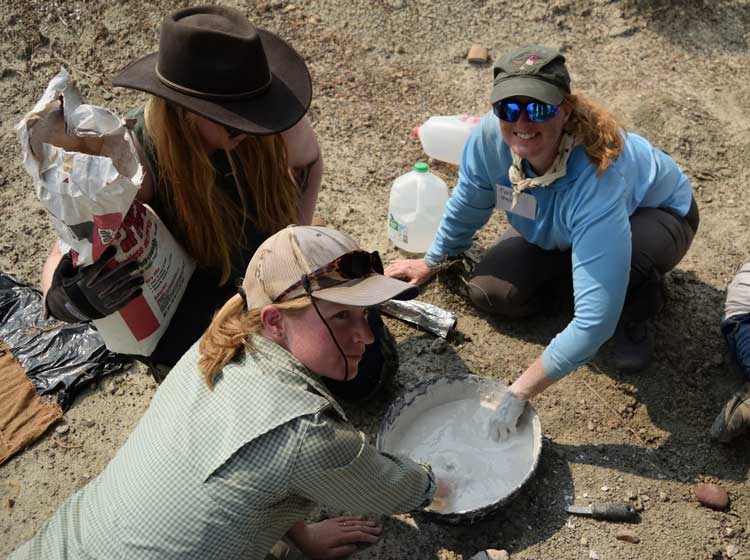
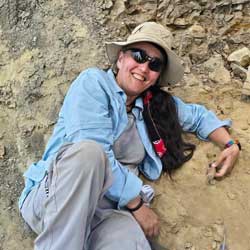 Dawn Elliot
Dawn Elliot
Middle school teacher, Lakewood, WA
Dawn teaches at a high needs Title 1 school and looks for every opportunity to allow her students to experience science, both inside and outside of the classroom: “DIG school inspired me to do what I can to bring ‘real’ science to my students.”
Understanding field science from only a textbook is a struggle for students. With her own real-world examples, Dawn can enrich her students’ learning and make science accessible and exciting.
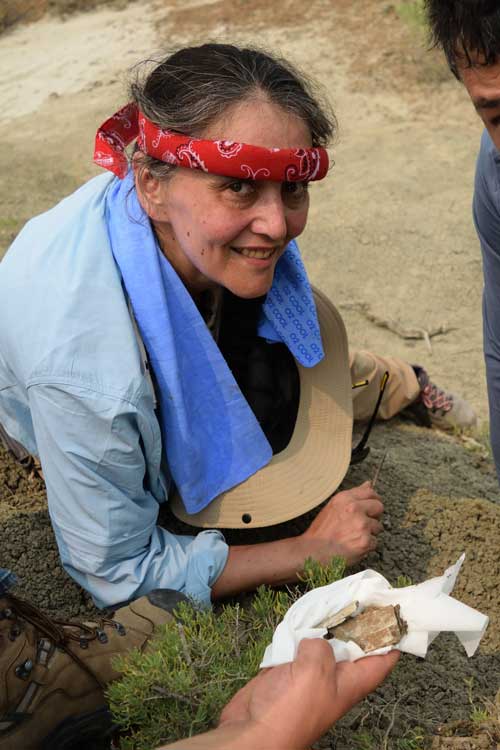
“DIG school taught me to find ways to allow students to work through investigations without interjecting myself into their learning process. I have also begun working on bringing practical hands-on science typically not covered into the classroom.”
Dawn plans to use Burke Boxes to enhance and expand on her lessons: “I want to teach my students about the Earth's stratification and its significance, which is currently not covered by my curriculum.”
